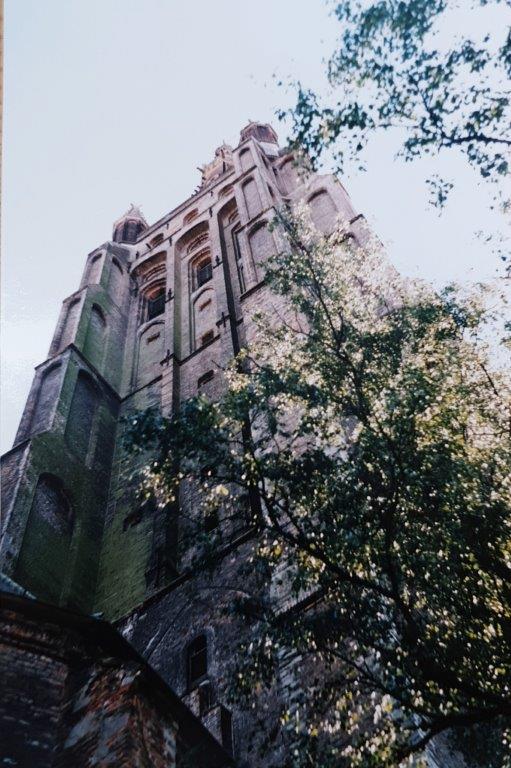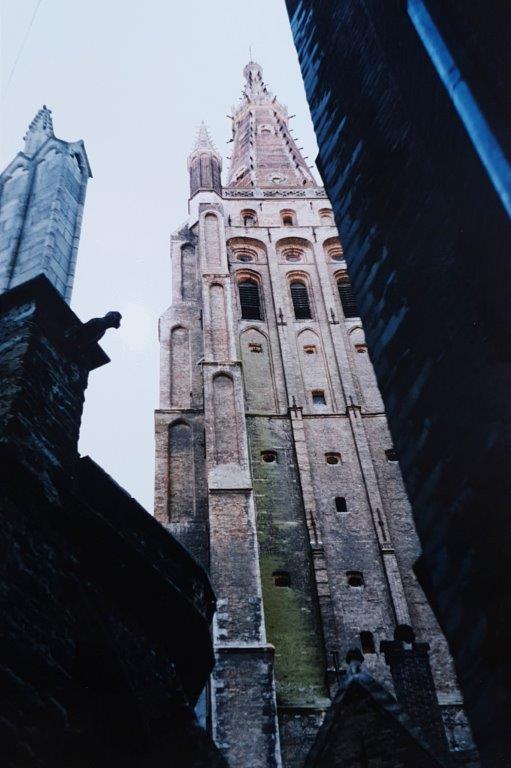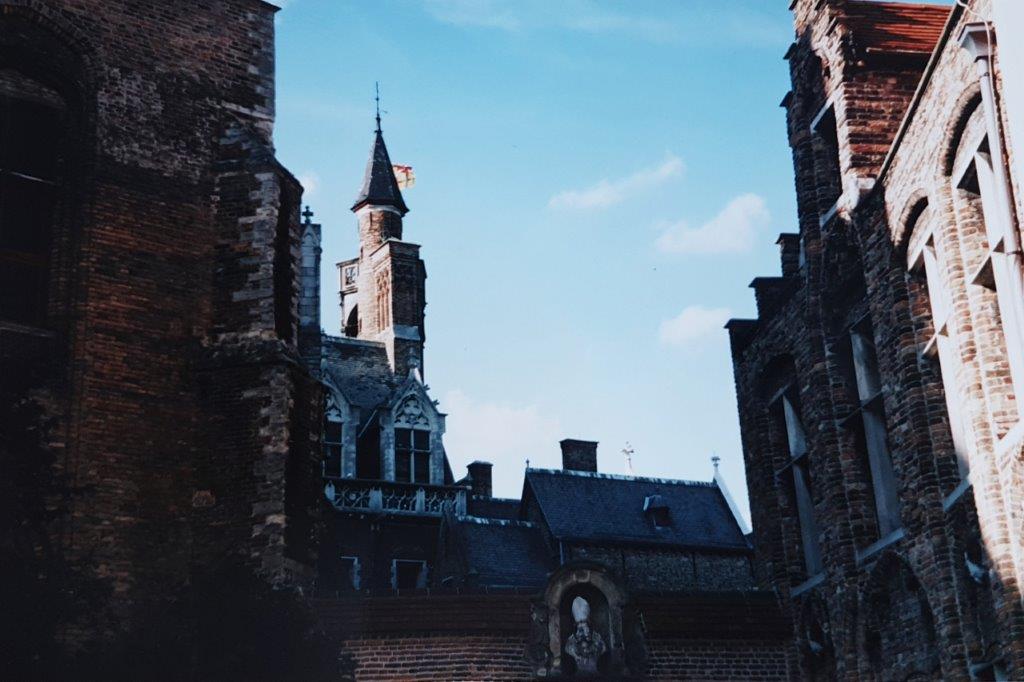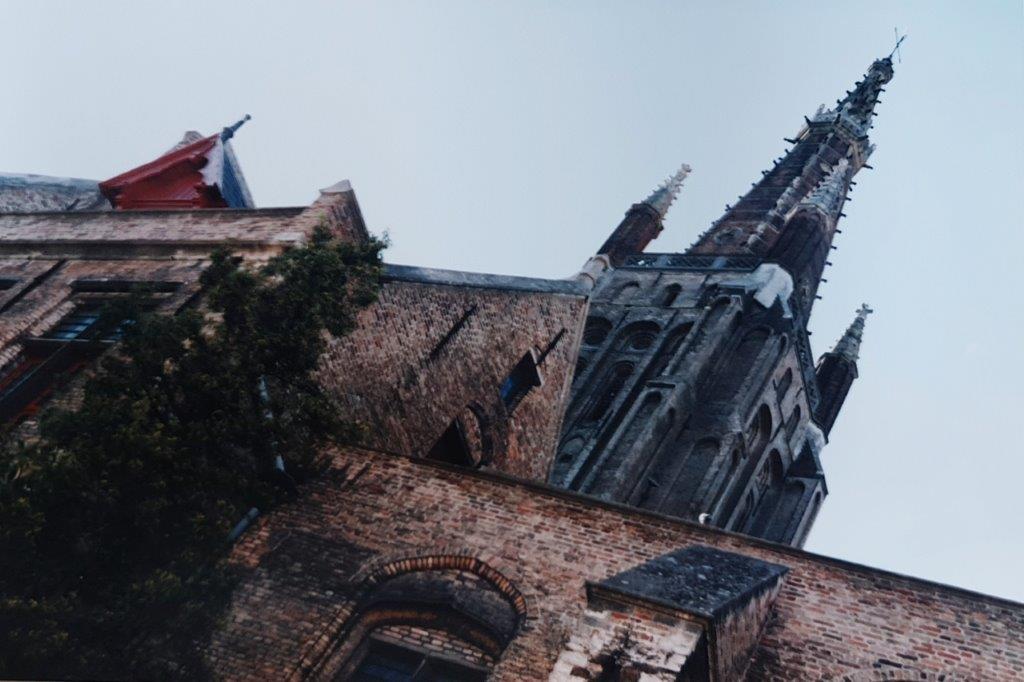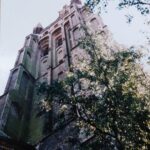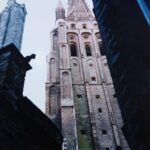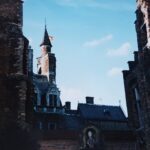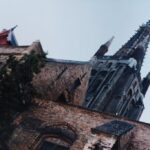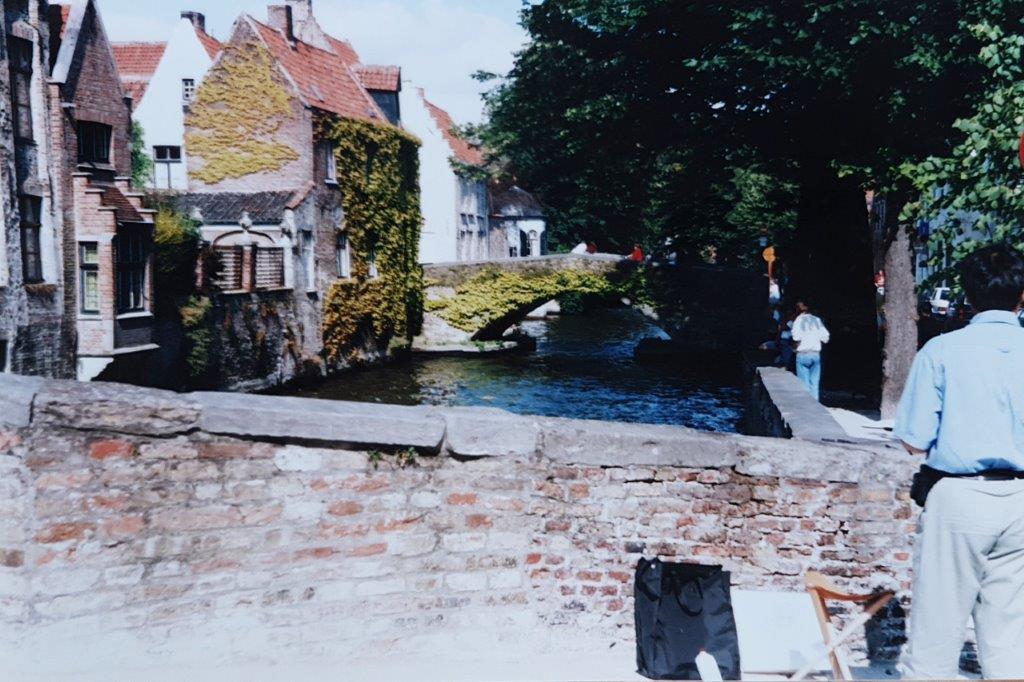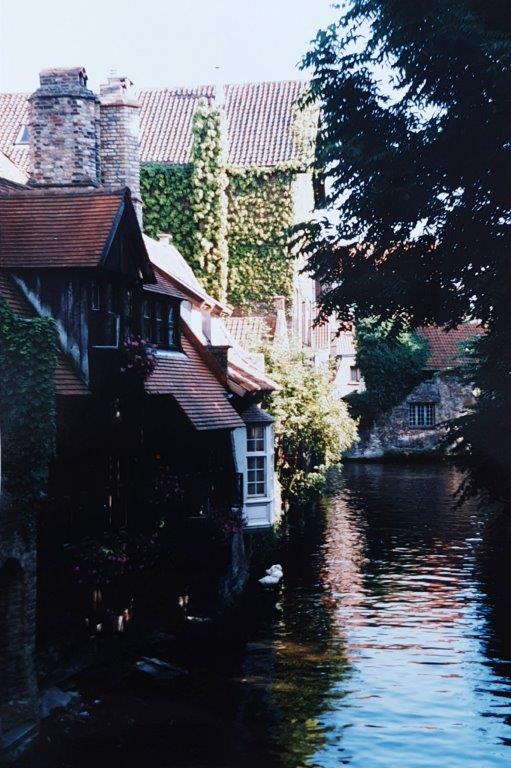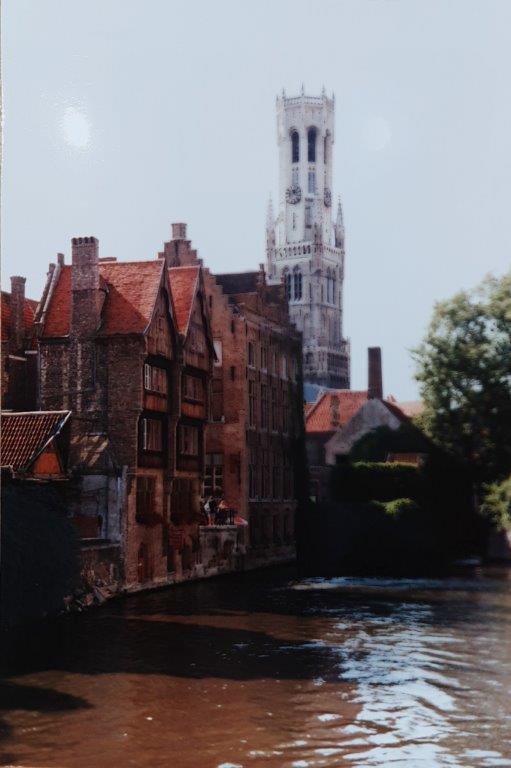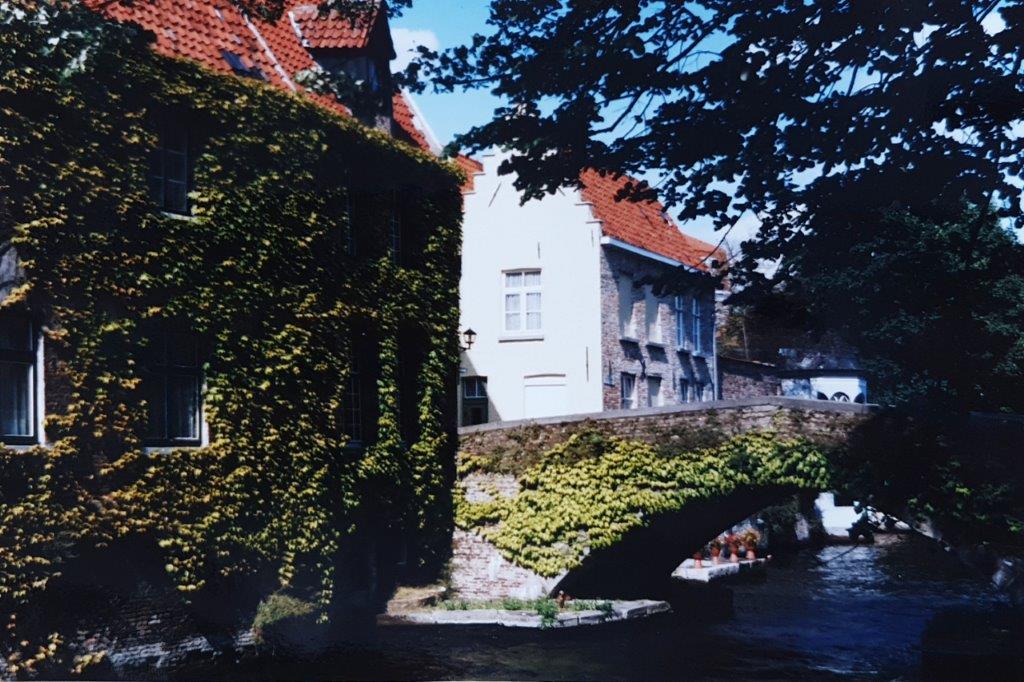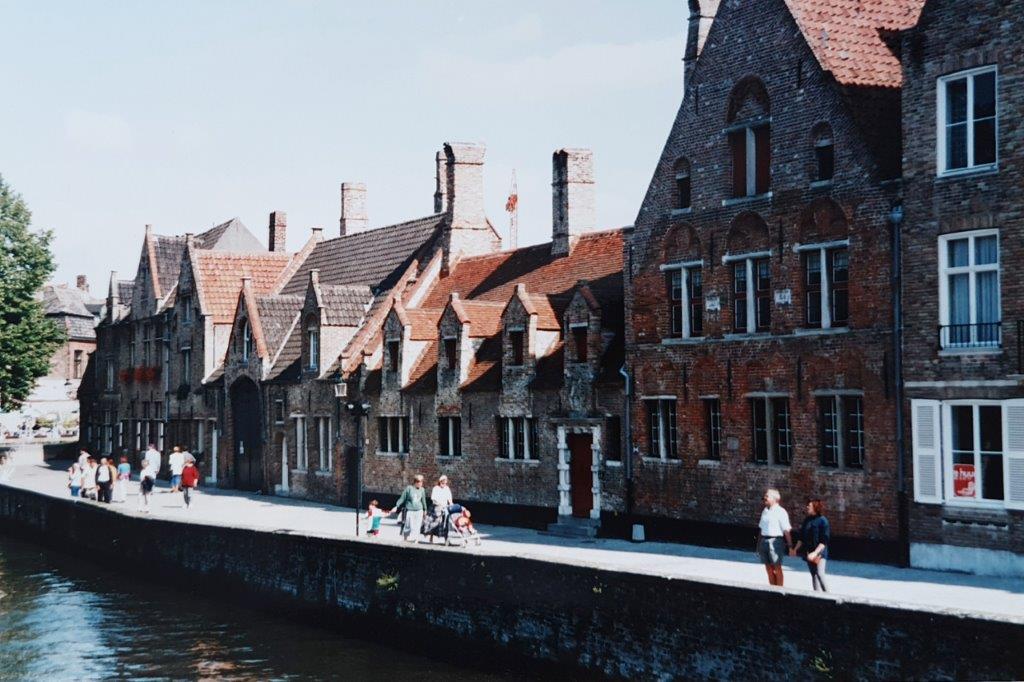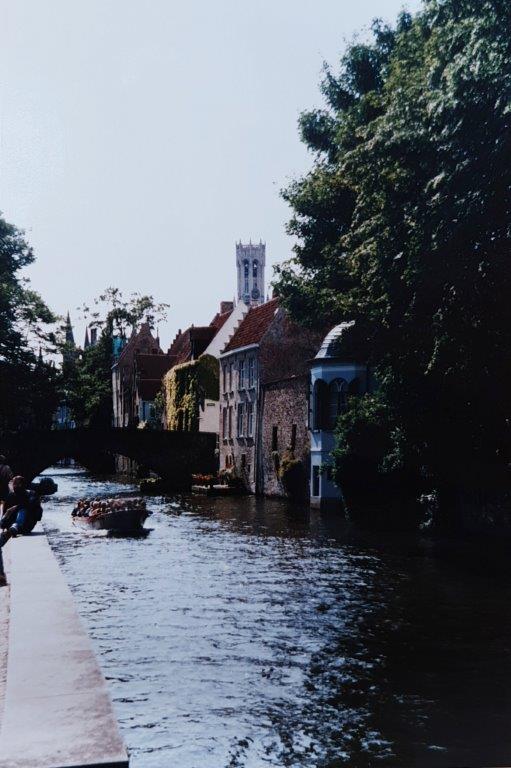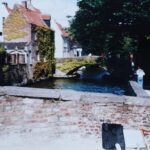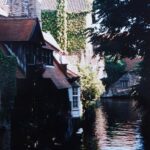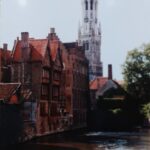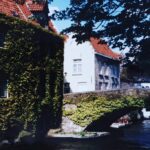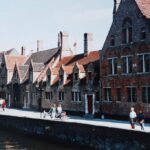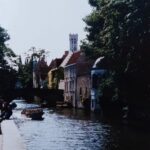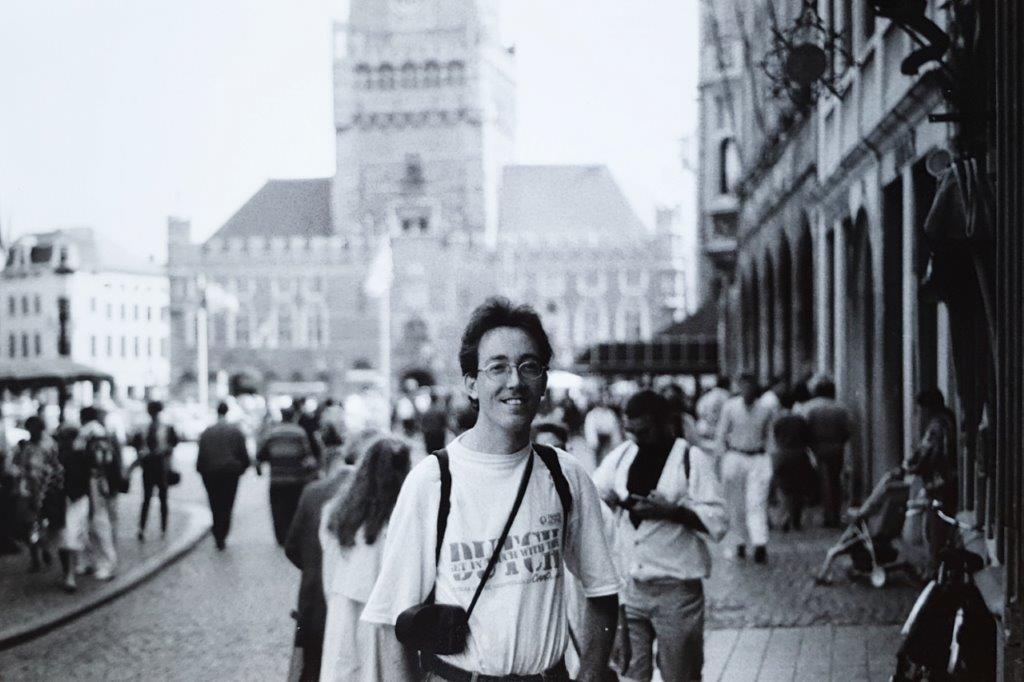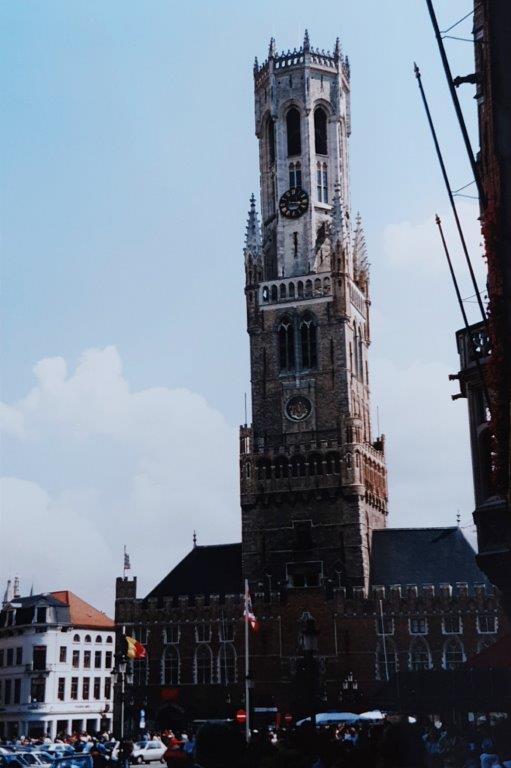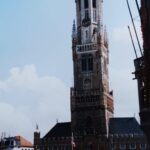A historic walk through the Hanseatic League town of Bruges
The Wandelgek’s hometown is the city of Deventer in The Netherlands, which is a former member of the Hanseatic trade league of towns that spread over northwest Europe in Medieval times. It is always nice to visit other Hanseatic towns like e.g. the Belgian city of Bruges.
Bruges (Dutch: Brugge) is the capital and largest city of the province of West Flanders in the Flemish (dutch speaking) Region of Belgium, in the northwest of the country, and the seventh-largest city of the country by population.
The historic city centre is a prominent World Heritage Site of UNESCO. It is oval in shape and about 430 hectares in size.
The Wandelgek has visited Bruges several times on his many travels and this is one of those occasions back in 1994, when he was staying in the nearby dutch province of Zeeland (Sealand) in the city of Middelburg. Although The Wandelgek visited the city much more often, this was the only occasion where he brought a camera and photographed the beautiful city center.
City Walk map
and on satelite:
Let’s go on a walk and enjoy the photo’s:
The Wandelgek travelled to Bruges by train so he arrived at the central railway station ⚪. From there it is only a short walk to the Begijnhof at the Minnewater…
Minnewater (A)
The Minnewater is an elongated lake in the center of Bruges. It is surrounded by the ramparts and the Minnewater Park, which was built in 1977-’79. North of the Minnewater is a street with the same name.
There are various theories about the origin of the name. Some say it comes from Middenwater (a bowl). Others think that minus is a synonym for driving, in other words controlling the water of the Reie.
Louis Gilliodts and Karel De Flou, supported by Albert Schouteet, were of the opinion that Minne was synonymous with Meene at the time, and that Minnewater was therefore a Municipal Water.
Frans Debrabandere disputes that the sound distortion from ‘meene’ to ‘minne’ can apply here. He says, following Maurits Gysseling, that the water derived its name from the Minnebrug. Medieval popular belief was convinced that ghosts or water spirits and water devils haunted large expanses of water and lived under bridges.
Begijnhof (Beguinage)(B)
The Princely Beguinage Ten Wijngaerde (Dutch: Prinselijk Begijnhof Ten Wijngaerde) is the only preserved beguinage in the Belgian city of Bruges. There are no more Beguines living there, but since 1927 it has functioned as a convent for Benedictines, founded by canon Hoornaert. In the same year the houses at the west side were also reshaped and enlarged into the Monasterium De Wijngaard, a priory of Benedictine nuns.
The top of the surrounding wall of the beguinage has all shapes of colored glass shards cemented in it. This was to prevent male intruders from climbing and scaling the wall and entering the beguinage with dishonorable intentions.
Already before 1240 a community of pious women settled at the domain ‘de Wingarde’ (old Dutch for vineyard), in the South of the city. This name probably refers to low-lying meadows. The beguinage was founded around 1244 by Margaret of Constantinople, after she requested permission to Walter van Marvis, bishop of Tournai, to move over the tomb chapel on the Burg of Bruges to the Wijngaard. In 1245 it was recognised as an independent parish. In 1299 it came under direct authority of king Philip the Fair and it was entitled as “Princely Beguinage”.
The complex includes a gothic beguinage church and about thirty white painted houses dating from the late 16th, 17th and 18th century. Practically all of these are built around a central yard. The main entrance with gate can be reached via the three-arched stone bridge, the Wijngaard Bridge. In a bay the image of the holy Elizabeth of Hungary can be seen, who was the patron of many beguinages. De Wijngaard is also devoted to Saint Alexius. The entrance gate was built in 1776 by master mason Hendrik Bultynck. The first Beguine house next to the entrance is furnished as a museum and the exhibition includes paintings, 17th and 18th century furniture and lacework, among others. A second gate gives access to the Sas House, via the Sas Bridge.
Entering the old town
Then The Wandelgek walked into the old town, leaving through the Minnewater Park and walking towards the canals.
Bruges is almost like an open air museum. Although I prefer Ghent, Antwerp and Brussels, I also know that none of these have the Bruges experience, meaning that as a visitor, you can completely loose yourself in a medieval town experience, without having to skip or delete parts of the movie from your brain. The town is virtually completely intact.
This makes the town of course a valhalla for painters…
Brouwerij De halve maan (The half moon brewery) (C)
A visit to Belgium and to Bruges is not complete without a visit to one of its breweries. The oldest brewery of Bruges is: Brouwerij De Halve Maan, which got famous for brewing their Straffe Hendrik beers, but later even more when they started brewing the Brugse Zot.
There are also very good non Bruges beers available in town that do refer to the town in e.g. their name and in case of the Brugse tripel (Triple Bruges), the referation is also put on their beautiful glasses in the form of a tiny medieval painting of the city of Bruges.
Sint Janshospitaal (Saint John’s infirmery) and the Hans Memling museum (D)
On the edge of the old town is another very interesting location. The Hans Memling museum.
Hans Memling (also spelled Memlinc; c. 1430 – 11 August 1494) was a painter active in Flanders, who worked in the tradition of Early Netherlandish painting. He was born in the Middle Rhine region, and probably spent his childhood in Mainz. He moved to the Netherlands and spent time in the Brussels workshop of Rogier van der Weyden. He was subsequently made a citizen of Bruges in 1465, where he became one of the leading artists, running a large workshop, which painted religious works that often incorporated donor portraits of his wealthy patrons. Memling’s patrons included burghers (bankers, merchants, and politicians), clergymen, and aristocrats.
Memling’s portraits built upon the styles that he learned in his youth. He became very successful, and in 1480 was listed among the wealthiest citizens in a city tax list.

Triptych of Earthly Vanity and Divine Salvation (front) (c.1485) Oil on oak panel, 22 x 13 cm (each wing) Musée des Beaux-Arts de Strasbourg
He married Anna de Valkenaere sometime between 1470 and 1480, and they had three children. Memling’s art was rediscovered, and became very popular, in the 19th century.
Onze Lieve Vrouwe kerk (E)
Next en-route was the Onze Lieve Vrouwe kerk (Church of Our Lady).
The Onze-Lieve-Vrouwekerk is one of the oldest places of worship in Bruges, and a tourist attraction. Until the end of the ancien régime, it was a collegiate church with a provost and a chapter of canons, afterwards a decanal church.
The 115.6 meters high tower, built entirely in brick, dominates the cityscape of Bruges. The Church of Our Lady, one of the tallest buildings in Belgium, is the second tallest brick building in the world (after the 130.6-meter-high Saint Martin’s Church in Landshut, Germany). It is a recognized parish church in Bruges and has been part of the Saint Donatian parish federation since the beginning of the 21st century. Since the 1980s it has also functioned as a tourist ‘reception church’.
Following the Dijver alongside the canal
One of the very best of the many highlights of Bruges is a walk along side or a boat tour over its many beautiful canals. Both are eye popping…
One of the best routes to walk is via the Dijver and the…
Rozenhoedkaai (F)
…from where you van see both, the Onze Live Vrouwe Church and the Bell Tower.
From the Rozenhoedkaai you can follow your walk to the 18th century Fish Market and then through the…
Blinde Ezelssteeg (Alley of the Blind Donkey) (G)
… which is a small medieval alley which opens up to…
The Burg (H)
… where the City Hall can be found and in front of it the historically very significant statue of Jan Breidel and Victor De Koninck.
Both Jan Breidel and Victor de Koninck were made famous in the very best book ever written in the european dutch language area:
De Leeuw van Vlaanderen by Hendrik Conscience
The book describes two parallel stories, one being a simple love story, but the other being the history of the Guldensporenslag, a large battle between the Flemish citizens of some large towns and an army of French armored knights on horseback, assembled by the French king. In this historically significant battle, the knights were massacred and it meant the beginning of the decline of the heavy armor plated knights on horseback.
Statue of Jan Breidel and Victor de Koninck
Breidel and De Koninck were heads of two different craftsmen guilds from Bruges, that started to work together in planning the demise of the French army.
In 2008 The Wandelgek was travelling through Belgium and visited Kortrijk, the city where this battle took place and the museum about its history and that of De Leeuw van Vlaanderen: Kortrijk – 2008
The market square and the Belfort (Bellfry) (I)
A bit further The Wandelgek arrived on the Markt, the large market square and there he ended his city walk at the bottom of the large Bell Tower, which had a sinister role in one of the very best movies about Bruges, named: In Bruges:
In Bruges is a 2008 black comedy crime film written and directed by Martin McDonagh in his feature-length debut. The film stars Colin Farrell and Brendan Gleeson as two Irish hitmen in hiding, with Ralph Fiennes as their enraged boss. The film is set and was filmed in Bruges, Belgium. One of the very best scenes of the movie was its conclusion, in which Colin Farrell roams through nightly Bruges. He is however drugged and thus sees all sorts of strange creatures (which seem to be partying people wearing masks and torches). The partying people in the scene have remarkable resemblances to nightmarish creatures that are seen on the now famous paintings of ductch painter Hieronymus Bosch.
I can really recommend watching that movie before or after visiting Bruges.
The Belfry of Bruges (Dutch: Belfort van Brugge) is a medieval bell tower in the centre of Bruges, Belgium. One of the city’s most prominent symbols, the belfry formerly housed a treasury and the municipal archives, and served as an observation post for spotting fires and other dangers.
The belfry was added to the market square around 1240, when Bruges was an important centre of the Flemish cloth industry. After a devastating fire in 1280, the tower was largely rebuilt. The city archives, however, were forever lost to the flames.
Beneath are some pictures of the Bell Tower…
Hope you enjoyed this all too brief blogpost of a beautiful town which everyone of my readers should at least visit once in their life, because it bustles with the stories and legends of the European and the Dutch past.














